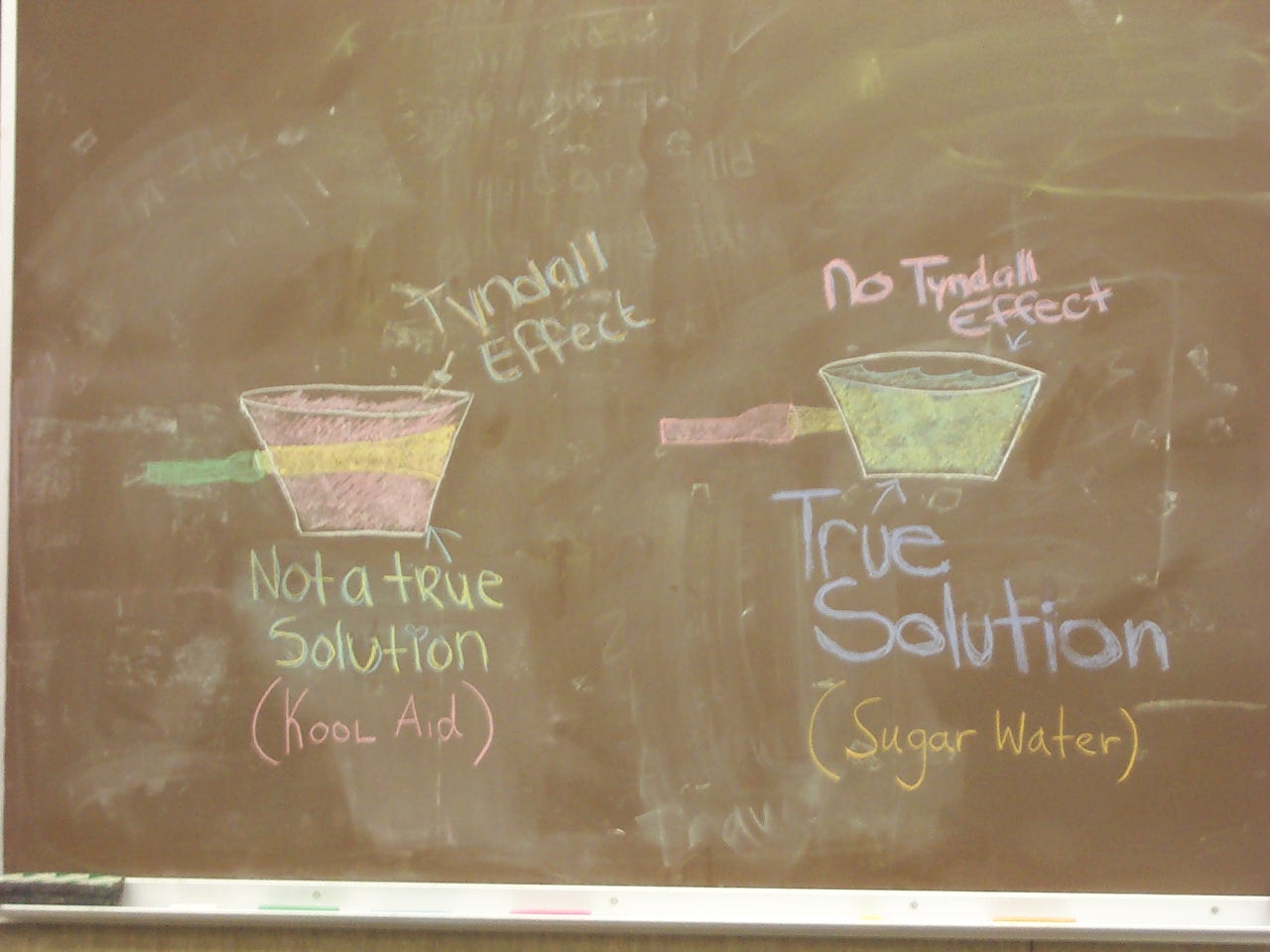
The Tyndall effect is a way of testing whether or not a liquid is a true solution...by using a flashlight in a darked room. Notice the beam of light is only visible in the non-solution. Thus, we say "non-solutions usually show the tyndall effect." True solutions, however, usually do not show the tyndall effect. True solutions usually do not produce any beams of light because the entire liquid becomes illuminated equally. Why do you think the non-solution (Koolaid) produced the beam of light while the sugar-water does not?